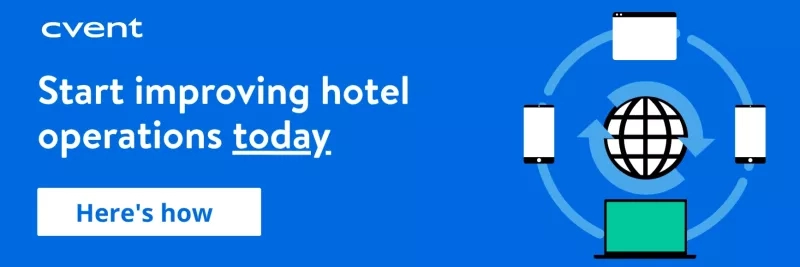One of the myriad of tasks hotel revenue managers are responsible for is implementing a pricing strategy that works for their property and their unique market. Many hotels used a fixed pricing strategy by creating a tiered pricing system based on room type, and this revenue management strategy was embraced for its simplicity. However, setting all rates in lockstep with a basic rate fails to account for differences in customer behavior and advertises room rates to customers as if they are all the same. Adopting an open pricing rate management strategy removes restrictions and empowers revenue managers to capture more revenue through independent, personalized room rates.
In this post, you’ll learn about open pricing: what it is, how it works, and how it can benefit hotels that implement it. We discuss how hotel revenue managers utilize an open pricing strategy to boost business, increase booking potential, and maximize revenue. Uncover the power behind flexible pricing, get actionable rate management tips, and discover helpful tools you can use to revive your hotel’s revenue management strategy.
Capture more revenue with open pricing
What is open pricing?
Open pricing is a hotel pricing and room distribution strategy that sells rooms at a rate that will both benefit the customer and provide the highest possible profit for the hotel at the same time. Properties that utilize open pricing strategies allow rates for all room types, dates, and across all hotel distribution channels to be optimized independently of one another with the primary goal of maximizing revenue. Rooms are not blocked or closed off by booking restrictions commonly in place with other popular pricing strategies, such as best available rate (BAR) pricing or room type-focused models.
How does open pricing work?
Hotels turn to open pricing to offer room rates that customers find attractive, regardless of seasonal shifts in occupancy, area events, or other circumstances. Properties that follow an open pricing revenue management strategy utilize a range of incremental price points that follow a demand curve. Instead of offering room rates at a designated discount or percentage off of hotel rack rates, open pricing allows the revenue management system to optimize prices based on customer behavior and current booking patterns.
Open pricing vs. BAR pricing
Best available rate pricing, also known as “fixed-tier” pricing, is a fixed pricing system in which each available room type sells at an established price related to a predetermined “best available rate.” Open pricing offers more flexibility than the popular BAR strategy used by most hotels.
The lowest rate offered for a specific room type is the hotel’s best available rate. It is the lowest price that potential guests will see published on any channel without applying member rewards, group codes, discount codes, or corporate rate information. The rate for each available room type is set based on the best available rate, with prices typically increasing as the room type upgrades.
Is open pricing the same as dynamic pricing?
Hotels that utilize dynamic pricing strategies allow prices to change and optimize based on demand and shifting market conditions. Open pricing is a different strategy than BAR pricing altogether, open pricing is a phase of dynamic hotel pricing.
The first phase occurs when rate ranges are set based on historical data, current demand data, and essential environmental characteristics, such as the hotel’s size, location, and room types. In the second phase of dynamic pricing, rate shops are completed to identify and analyze competitor rates.
The third phase, open pricing, is an evolution of dynamic pricing made possible by advances in hotel technology. During the open pricing phase, a cloud-based revenue management system uses real-time data to make decisions, set room rates, and optimize pricing based on guest demand and changes in the market. This cross-elasticity price optimization results in precise inventory allocations and brings each room rate to the highest price customers in different market segments are willing to pay.
The advantages of open pricing
Using an open pricing strategy allows hoteliers and revenue managers to spend less time loading rates and more time uncovering new business. The flexibility, independence, and revenue-capturing potential of open pricing enable revenue managers to step away from rate monitoring, trusting that the RMS is making intelligent decisions based on real-time, real-world data.
• Flexible pricing strategy
In an open system, any room can be sold at any time, on any distribution channel, at a rate travelers find beneficial. The revenue management system can utilize demand information from all booking channels and apply a flexible pricing strategy based on current demand information. Real-time data analysis allows the RMS to function and make decisions without BAR limitations or channel restrictions, providing travelers with attractive rates and more flexible cancellation policies.
The RMS may close certain booking channels during peak periods to protect ADR if you're operating on a fixed pricing model. Implementing an open pricing strategy allows the hotel to remain open and to sell at all times, even during peak booking times. For example, if demand for Friday night is high, the hotel may block specific channels for Friday. While temporarily blocking booking channels could help the hotel capture higher ADR on Friday, availability restrictions could also cause the hotel to miss out on multi-night stays that overlap with Friday. Closing booking channels could cost the hotel valuable shoulder night occupancy and revenue.
• Independent room rates
Rooms are independently priced based on demand instead of the hotel’s goal rate. Each room type and channel are optimized to match customers’ willingness to pay rather than the predetermined BAR tiers. For example, if suite demand is low, the system may lower suite rates to create a revenue opportunity for the hotel where there previously wasn’t one.
Instead of consistently advertising a BAR of $150/night, open pricing accounts for low suite demand and tells the system to match it, dropping rates to $100/night. BAR restrictions would likely prohibit the room type from selling at a $50/night discount, but open pricing enables booking at a heavily discounted rate. The system acknowledges that the room is unlikely to sell at its current pace and offers a steep discount to capture $100 in revenue instead of $0.
Additionally, if demand for a suite is high, the hotel can increase the room rate based on perceived desirability to maximize hotel profits without driving business away. The revenue system reads the increase in demand and identifies an opportunity to capture additional hotel revenue from guests that place a high value on suite amenities.
• More revenue potential
Hotels can appeal to a broader range of customer price points through price personalization, meeting their needs and budget. Perceived value-based room rates are determined based on what customers are willing to pay, with the highest room rates reflecting the highest rates that guests still find appealing. Additionally, value-based rates allow hotel revenue managers to capitalize on rate opportunities during the hotel’s shoulder seasons or off-season.
Open pricing tips for hotels
Open pricing may seem complicated to set up and enact, but powerful developments in hotel technology and revenue management software have sped up the process significantly. To ensure that your hotel is effectively executing open pricing, follow these tips:
• Integrate hotel systems before shifting to open pricing. To streamline the implementation process, integrate the hotel’s PMS, RMS, and central reservation systems. Software integration will allow the systems to communicate, share data, and update simultaneously. While hotels without integrated systems can set rate ranges manually by room type and date, the process is lengthy and prone to manual entry errors.
• Get rate model approval. Discuss proposed rate ranges, dates, and outliers with the GM, owner, brand director, or other hotel regulatory bodies. If overhead management sees that your hotel is constantly shifting rates, they will have questions and could be upset if caught off-guard. Meet with leadership to confirm the minimum and maximum rates offered for each category, the pricing order, and the reasoning behind your rate decisions.
• Review and adjust rates quarterly. Review the minimum and maximum values quarterly to stay ahead of demand, making rate changes when necessary to maximize revenue. Adjust room rates to reflect forecasting updates and market trends.
• Adjust booking discounts instead of closing channels. Instead of eliminating booking AAA discounts during high-demand periods, adjust the available discount. Don’t eliminate the AAA booking option; change the discount value from 10% to 1%, and leave the channel open.
• Take advantage of open pricing tools. Utilize tools, software, and resources that automate and optimize open pricing processes. Integrated hotel systems, automated rate shopping tools, demand reporting services, and performance analytics can help hotels implement and track the success of their open pricing strategy.
Cvent’s suite of powerful revenue management tools
Cvent offers an extensive suite of tools and solutions for hotel revenue management directors. Reinvent your property’s revenue management strategy with automated services, real-time intelligence reporting, rate publishing assistance, and more.
1. Cvent Transient
Inside Cvent Transient, hoteliers will find a variety of helpful resources to import, load, and distribute accurate rate information, such as:
• HOD Publisher: Create or update your hotel description for simultaneous publishing across the major GDSs and internal hotel systems.
• Channel Publisher: Standardize and automate property content distribution across multiple online channels to ensure that property details are up-to-date and accurate everywhere online customers may encounter your hotel.
• Rate Manager: Eliminate tedious, time-consuming manual rate loading. Import and review rate plans to save time, maximize efficiency, and avoid manual entry errors.
• Rate Audit: Quickly confirm that all hotel rates are loaded correctly into internal systems (e.g., hotel PMS) and the major GDSs.
2. Business Intelligence
Analyze changes in your market and evaluate the success of hotel pricing strategies with Cvent’s Business Intelligence tools. Intelligence tools provide hoteliers with the insights they need to beat the competition in evolving market conditions by tracking shifts in demand, forecasting demand surges, and monitoring goal progress. Get unparalleled insights into your transient business to identify booking habits, patterns, appealing rate ranges, and more, helping you outsmart competing hotels in your area.
3. Demand Reports
Hotels can access valuable reporting inside Cvent’s Intelligence Suite to uncover demand. Run proximity reports to find more local transient business and access resources to help your property target nearby companies.
4. CSN Advertising
Advertise your hotel on the Cvent Supplier Network (CSN), and market your property to thousands of planners, corporate agents, group organizers, and other travel professionals actively sourcing in your area. Connect with planners in relevant ways through branded pages, interactive ads, and custom microsites. Drive high ADR business and appeal to travelers who appreciate high-end amenities by advertising your property in Cvent’s Luxury Tab.
Unleash the power of open pricing
Now that you have a firm understanding of open pricing and why hotels utilize the demand-based pricing strategy, you can decide whether it’s the most suitable rate model for your property and market. Using Cvent’s robust suite of rate management tools, revenue managers can optimize their rate pricing strategy, capturing more customers and revenue in the process.
Next, we explore various pricing strategies hotels can use for more effective revenue management. In addition to demand-based pricing, we delve into rate parity, occupancy-based strategies, day-of-week pricing optimization, and more. Keep reading to uncover fourteen effective hotel pricing strategies you can use to capture more revenue.






